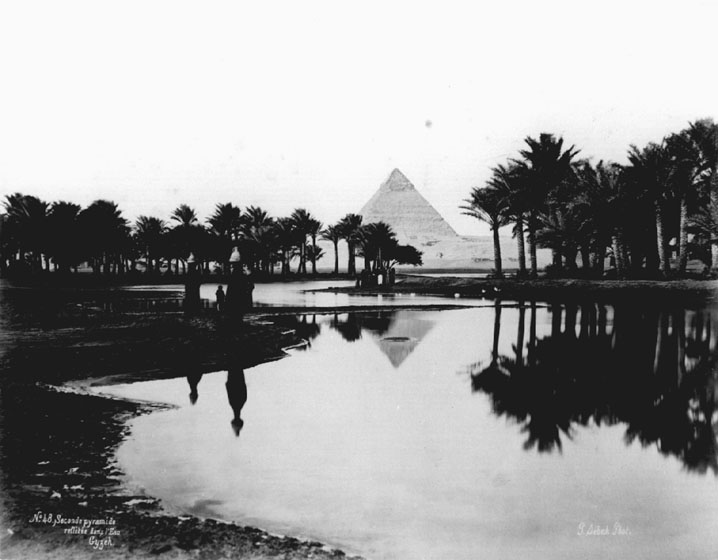
At first, the man dressed in a dark blue robe could see little more than a narrow silver band lining the dark silhouettes of the hills on the east bank, across the wide Iteru, the river. It was the river and its inundation which for several months of every year turned the valley into a lake surrounded by the vast sun-drenched and desolate deserts and so rejuvenated the whole of Kemet, the Black Land. But now, at this time of the early morning, the river was only a large and inert expanse of dark and murky water, as the world must have been at the time when the Earth was created. As the man watched, the sliver of brightness in the east was slowly changing to gold, betraying the presence of an enormously powerful, but as yet invisible, source of light rising there. Then, with an astonishing speed, the first rays shot over the summits of the limestone hills and the brilliant sun-disc suddenly appeared after a night of concealment and extended thousands of long thin gleaming arms presenting the gift of life to the world below. Everybody heaved a sigh of relief. All was well. A new day was sucessfully born, as it had been since the beginnings of time when the Earth was ruled by the gods. The world could once again relax.

The man sat on the ground under a solitary date-palm tree, with his legs drawn up before him. Images which flickered through his restless mind took him back to that other place in the south of Kemet.
He saw the city of Akhetaten as vividly as if it were before him, and not a mere recollection of what had been nearly two decades ago. Its temples, palaces, offices, houses and gardens were full of life and purposeful bustle, with courtiers, officials, soldiers, priests and servants going briskly about their early morning business. And, responding to the call of the sun rising between the twin hills after which the city was named, the king Akhenaten and his beautiful queen Nefertiti appeared in their royal chariot and dashed at a breakneck-speed along the wide royal road towards the temple of the supreme deity, the Aten, in order to perform the early morning ritual. But twenty years is a long time, and all that was now but a cherished memory receding fast: the king and the queen were dead, their new religion was almost forgotten, and the city of Akhetaten was abandoned.
The man got up and, shielding his eyes against the sun which was now beginning to blaze mercilessly, cast a quick glance northwards towards the royal palace. It was the splendid residence of the living god, the king now known as Tutankhamun, the ruler of Upper and Lower Egypt. The expression on the man's face changed to one of utter contempt. That incompetent youngster who was betraying all that his father had stood for! He even changed his name so that it would show no connection with his father's teachings and replaced the Aten by the god Amun. He was no longer Tutankhaten, now he was Tutankhamun!
But in the palace all was quiet and seemingly oblivious to the call of the morning sun. Even the sentries outside its massive gate were only half- awake, leaning on their spears for support. The man got up, turned his back on the city and marched resolutely westward, towards the distant rocky escarpment which separated the fertile green valley from the barren grey sands of the desert. There was no time to waste.
The photograph of the pyramids at Giza, to the north of Mennufer, during inundation is by Pascal Sébah, Griffith Institute photo. 3345. © Griffith Institute, Oxford.